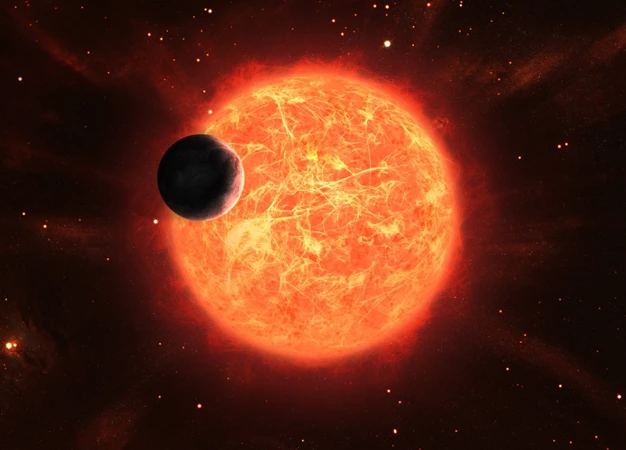Red Giants: Giants in the Late Stages of Stellar Evolution
Welcome to the enchanting world of red giants, massive celestial beings that are in the twilight of their existence. These colossal stars captivate us with their immense size and intriguing characteristics. From their formation process to their impact on the galaxy, red giants hold a special place in the realm of astrophysics. In this article, we will delve into the life cycle, properties, and composition of these celestial giants. We will explore the various methods used to observe and study them, including the role of telescopes and stellar interior modeling. Additionally, we will examine the external factors that influence red giants, such as stellar evolutionary factors and interactions with binary star systems. Join us on this cosmic journey as we unravel the mysteries of red giants and discover their profound significance in the universe.
Contents
- What Are Red Giants?
- Life Cycle of a Red Giant
- Properties and Composition
- Impact on the Galaxy
- Observation and Study
- External Factors Affecting Red Giants
- Conclusion
-
Frequently Asked Questions
- What is the definition of a red giant?
- How are red giants formed?
- How large are red giants?
- What causes the vibrant colors of red giants?
- What happens during the post-red giant stage?
- How do we study and observe red giants?
- What is the role of red giants in the production of elements?
- What factors influence the evolution of red giants?
- Do red giants have an impact on the galaxy?
- Can red giants emit gravitational waves?
- References
-
Frequently Asked Questions
- What is a red giant?
- How are red giants formed?
- How big are red giants?
- What is the surface temperature of a red giant?
- What elements are produced in red giants?
- How do red giants impact the galaxy?
- How do scientists observe and study red giants?
- What factors influence the evolution of red giants?
- Can red giants interact with other stars?
- Do red giants lose mass?
- References
- Read More
What Are Red Giants?
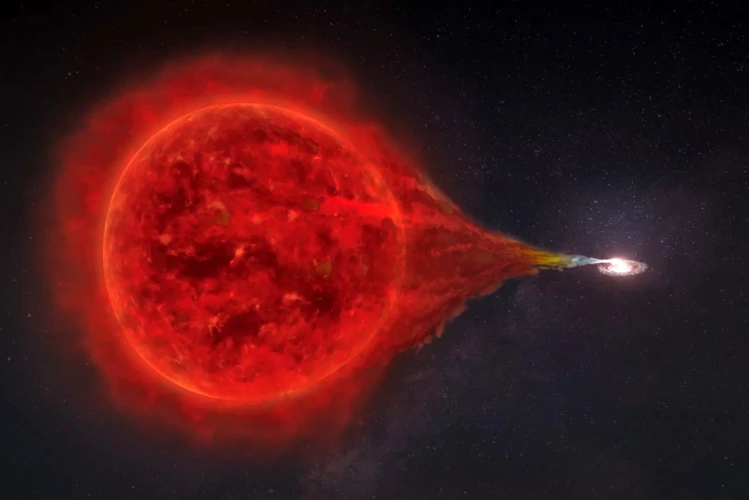
Red giants are magnificent celestial objects that exist in the late stages of stellar evolution. These stellar behemoths are characterized by their immense size and intriguing features. Red giants are formed when a star exhausts the hydrogen fuel in its core and begins to expand and cool. This expansion causes the outer layers of the star to become less dense, resulting in a significant increase in its size. As a result, red giants are several times larger than their previous main sequence phase. One remarkable aspect of red giants is their vibrant colors, which range from orange to red. These colors are a result of the cooler temperatures on the surface of the star. Red giants play a vital role in the overall life cycle of stars, as they are responsible for the production and dispersal of elements into the surrounding space. Their immense mass and size enable them to release vast quantities of elements such as carbon, oxygen, and even heavier elements like iron and gold through processes like nuclear fusion. The understanding of red giants not only provides insights into the evolution of stars but also offers valuable clues about the development and composition of our universe.
Definition and Characteristics
Red giants are a fascinating class of stars characterized by their unique definition and characteristics. These celestial giants are formed when a star exhausts its hydrogen fuel and enters the later stages of stellar evolution. One of the most notable characteristics of red giants is their immense size. They are several times larger than their previous main sequence phase, with some red giants reaching sizes hundreds of times greater than our Sun. Another defining feature of red giants is their low surface temperature. While main sequence stars like our Sun emit bright white light, red giants appear reddish or orange in color due to their cooler surface temperatures.
In addition to their size and temperature, red giants undergo significant changes in their internal structure. As hydrogen fuel depletes in their cores, red giants start consuming helium through a process called helium fusion. This causes the stars to expand further and become even larger. The energy produced during this fusion process counterbalances the gravitational forces pulling the star inward, resulting in a relatively stable equilibrium. Despite this stability, red giants are highly active stars, often exhibiting intense surface activities such as stellar pulsations and the ejection of stellar material into space.
Red giants are not only impressive in their own right but also have a profound impact on the overall structure and composition of galaxies. The elements produced inside these stellar giants are dispersed into space during their later stages, enriching the interstellar medium with heavy elements crucial for the formation of new stars, planets, and even life itself. The study of red giants provides us with valuable insights into stellar evolution, galactic chemical enrichment, and the potential for habitable environments both within our own Milky Way galaxy and in other galaxies scattered throughout the vast expanse of the universe.
Formation Process
During the formation process, red giants go through several stages that eventually lead them to their majestic state. It all begins with a molecular cloud, a vast region of gas and dust in space. Within this cloud, areas of higher density form, known as molecular cloud cores. These cores are composed mostly of hydrogen gas and are subject to gravitational collapse. As the core contracts, it heats up and forms a protostar. The protostar continues to accumulate mass from its surroundings, primarily through the accretion of more gas and dust. Over time, the protostar becomes denser and hotter, reaching a critical point where nuclear fusion begins in its core. This marks the transition to the main sequence stage of stellar evolution. During this stage, the protostar stabilizes, maintaining a balance between the inward force of gravity and the outward force of energy released through nuclear fusion. Once the main sequence is completed, stars with masses similar to our Sun’s will slowly transform into red giants. This transition occurs as the hydrogen fuel in the star’s core becomes depleted. With no significant energy source to counteract gravity, the core contracts while the outer layers expand. This expansion leads to the dramatic increase in size that characterizes red giants. It is in this final stage of stellar evolution that red giants become the awe-inspiring giants we perceive them to be. The formation process of red giants showcases the intricate interplay of gravity, nuclear fusion, and the life cycle of stars, adding to the captivating narrative of our universe.
Life Cycle of a Red Giant
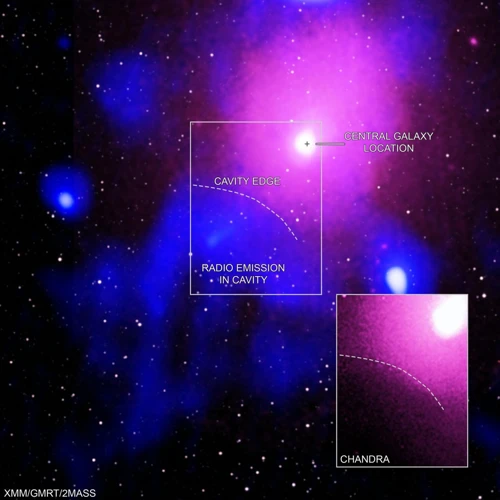
During their life cycle, red giants go through several distinct stages that shape their evolution. The life cycle of a red giant begins with the protostar stage, where a cloud of gas and dust begins to collapse under its own gravity, forming a dense core. Over time, this core becomes hot and dense enough for nuclear fusion to begin, marking the start of the main sequence stage. In this stage, the star fuses hydrogen atoms in its core to form helium, releasing a tremendous amount of energy. As the star exhausts its hydrogen fuel, it enters the expansion and red giant stage. At this point, the core contracts while the outer layers expand, causing the star to become significantly larger and cooler. During this phase, red giants undergo intense convection, which mixes the interior layers and enables the fusion of helium and other heavier elements. Finally, in the post-red giant stage, the outer layers of the star are expelled into space through stellar winds or violent supernova explosions, leaving behind a remnant such as a white dwarf or even a neutron star. This remarkable journey of stellar evolution shapes the destiny of red giants and contributes to the rich tapestry of the cosmos.
Protostar Stage
During the protostar stage, the journey towards becoming a red giant begins. This stage marks the initial formation of a star and is characterized by the accumulation of interstellar matter within a dense region called a molecular cloud. The protostar is formed when gravitational forces cause the molecular cloud to collapse under its own weight. As the cloud collapses, it undergoes fragmentation, resulting in the formation of multiple dense cores. One of these cores becomes the protostar, where matter continues to accrue. The protostar gradually grows as more gas and dust are pulled in by gravity, causing it to gain mass. As the protostar accretes mass, it heats up due to the conversion of potential energy into thermal energy. Eventually, the temperature at the core of the protostar becomes sufficient to initiate nuclear fusion. This fusion process ignites the star, marking the transition from the protostar stage to the main sequence stage. The protostar stage is a critical phase in stellar evolution, shaping the future development and characteristics of the star. Understanding the intricacies of this stage provides valuable insights into the early stages of star formation and the diverse nature of the universe we inhabit.
Main Sequence Stage
During the main sequence stage, a red giant undergoes a significant phase of its stellar evolution. This stage is characterized by the fusion of hydrogen atoms in its core, where immense heat and pressure create the perfect conditions for nuclear reactions to occur. The core of the red giant acts as a nuclear furnace, steadily converting hydrogen atoms into helium through a process known as nuclear fusion. This fusion process releases an enormous amount of energy in the form of light and heat, which radiates outwards from the core, creating a delicate balance between the inward force of gravity and the outward force of radiation pressure. The main sequence stage is a critical period in a star’s life, as it represents a time of equilibrium, where the gravitational pull is balanced by the radiation pressure, preventing the star from collapsing under its own weight. The duration of the main sequence stage depends on the mass of the red giant; higher mass stars will have shorter main sequence lifetimes compared to lower mass stars. The energy generated during the main sequence stage is what allows the red giant to shine brightly and illuminate the surrounding space. As the core continues to burn hydrogen and produce helium, the star remains relatively stable and maintains its size and temperature. However, this phase is temporary, and eventually, as the hydrogen fuel in the core is depleted, the red giant will move on to the next stage of stellar evolution. This transition marks the beginning of the expansion and red giant stage, where the red giant undergoes dramatic changes in size, temperature, and overall structure.
Expansion and Red Giant Stage
During the expansion and red giant stage, a star undergoes significant transformations that mark a crucial phase in its evolution. As a star’s core runs out of hydrogen fuel, fusion reactions decrease, leading to a decrease in the outward pressure that balanced the force of gravity. Without this balance, gravity begins to assert its dominance. The star’s core collapses under its own weight, increasing in temperature and density. Simultaneously, the outer layers of the star expand enormously, causing the star’s size to increase substantially. This expansion leads to the formation of a red giant. The red giant stage is characterized by its immense size, often stretching several hundred times larger than its initial size during the main sequence stage. The expansion also causes the outer layers of the star to become cooler, leading to a change in the star’s color from blue or white to a vibrant red or orange. The increased surface area of the star results in a lower surface temperature, making its luminosity decrease. Although the core of a red giant continues to generate energy through fusion reactions, the overall energy output of the star decreases due to the vast surface area. It is during this stage that certain heavier elements, such as carbon and oxygen, are synthesized through various nuclear reactions taking place in the star’s core. The expansion and red giant stage is a fascinating and crucial phase in the life cycle of a star, shaping its future path towards either a planetary nebula or a supernova explosion, depending on its mass and other factors.
Post Red Giant Stage
The marks the final chapter in the life cycle of a red giant star. After the red giant has exhausted its nuclear fuel, it undergoes significant changes in its structure and composition. One of the most notable phenomena during this stage is the shedding of the outer layers of the star, which create a luminous nebula known as a planetary nebula. As the outer layers drift away from the core, an exposed and intensely hot stellar remnant is left behind, known as a white dwarf. White dwarfs are incredibly dense objects, with a mass comparable to that of the Sun packed into a much smaller volume. They are composed mostly of carbon and oxygen, and their surface temperatures can exceed 100,000 Kelvin. Over time, these white dwarfs gradually cool down and fade away, becoming known as black dwarfs, although the process of black dwarf formation is estimated to take trillions of years. This post red giant stage, with its formation of planetary nebulae and white dwarfs, offers a captivating glimpse into the final stages of stellar evolution and the intricate processes that shape our universe.
Properties and Composition
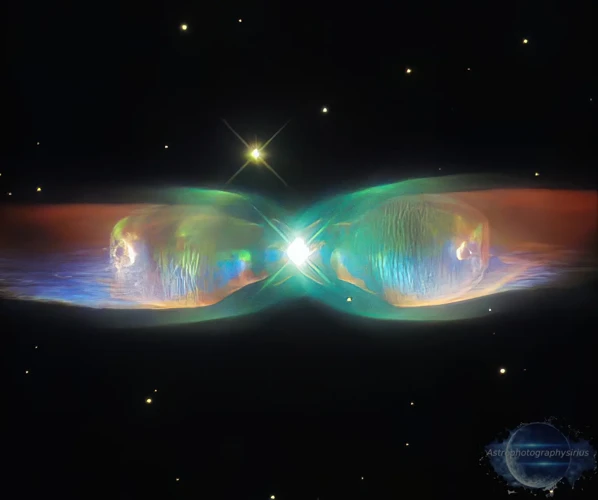
Red giants possess unique properties and compositions that set them apart from other celestial objects. Size and mass: Red giants are incredibly large, with diameters that can range from 20 to over 1,000 times that of our sun. Their masses vary, but they typically have a mass similar to or slightly larger than the sun. Surface temperature and color: Red giants have cooler surface temperatures compared to other stars, which gives them their distinctive red or orange hues. The surface temperatures can range from 3,000 to 4,500 Kelvin. Element production: As red giants near the end of their life cycle, they undergo nuclear fusion processes that lead to the production of elements. These fusion reactions create heavier elements, such as carbon, oxygen, and even elements as heavy as iron and gold. This elemental production enriches the surrounding space with vital building blocks for future star formation. The unique properties and compositions of red giants make them fascinating objects of study, shedding light on the intricate processes underlying stellar evolution and the creation of elements that shape the fabric of our universe.
Size and Mass
The size and mass of red giants are truly astounding. When a star transitions into its red giant phase, it undergoes a dramatic expansion, increasing its size several times over. Red giants can reach sizes ranging from a few times that of our own Sun to over a hundred times its radius. These massive stars dwarf their previous main sequence counterparts. For instance, our Sun, which is about 1.4 million kilometers in diameter, will eventually expand into a red giant with a radius of around 200 times its current size. The increase in size comes as the star’s core begins to fuse helium, causing the outer layers to expand outward.
In addition to their impressive size, red giants also possess immense mass. Due to the accumulation of matter during their lifetime, red giants can have masses up to several times that of our Sun. The mass of a red giant is a determining factor in its evolution and behavior. A higher mass red giant will have a stronger gravitational pull, resulting in denser stellar atmospheres and stronger stellar winds. These powerful winds can play a crucial role in the redistribution of mass and elemental enrichment in the surrounding interstellar medium. The combination of their substantial size and mass makes red giants key contributors to the overall dynamics and chemical evolution of galaxies.
Understanding the size and mass of red giants is crucial in unraveling the mysteries of stellar evolution and the intricate workings of the universe. By studying these celestial giants, astronomers and astrophysicists gain invaluable insights into the mechanisms that drive star formation, evolution, and ultimately the diversity of cosmic structures. Whether it is through the use of advanced telescopes, stellar modeling, or the analysis of exoplanetary systems, the exploration of red giants continues to expand our knowledge of the fascinating cosmos.
Surface Temperature and Color
Surface Temperature and Color of Red Giants
The surface temperature of a red giant is a key factor that influences its color and overall appearance. While red giants are predominantly characterized by their red or orange hues, their specific colors can vary depending on their temperature. As red giants evolve, their increase in size causes the outer layers to cool down, resulting in a decrease in surface temperature. The surface temperatures of red giants can range from approximately 3,000 to 4,500 Kelvin.
At the lower end of this temperature range, around 3,000 Kelvin, red giants exhibit a deep red color. This red coloration is caused by the relatively cool surface temperatures and the dominance of molecules and compounds that absorb and scatter shorter wavelengths of light, such as hydrogen and carbon compounds. On the other hand, red giants with slightly higher temperatures, around 4,000 to 4,500 Kelvin, display an orange or even yellowish color. This shift in color is attributed to a decrease in the absorption and scattering of shorter wavelengths of light.
The color of a red giant is not merely a visual characteristic but also provides crucial insights into its physical properties. Observing the color of red giants can help astronomers estimate their surface temperature and, in turn, infer their evolutionary stage. By studying the color variations of red giants within a star cluster or galaxy, scientists can gain valuable information about the age and composition of these celestial objects.
Understanding the connection between surface temperature and color in red giants is essential in expanding our knowledge of stellar evolution and the galactic ecosystem. It allows astronomers to decipher the intricate processes occurring within these aging stars and contributes to the broader understanding of our universe.
Element Production
Element production is a fundamental process that occurs within red giants, shaping the composition of the universe. Red giants are stellar powerhouses capable of fusing elements in their cores through nuclear reactions. As red giants begin to exhaust their hydrogen fuel, their cores contract and heat up, enabling the fusion of helium atoms into heavier elements. This process, known as helium fusion, releases an incredible amount of energy. It is this energy that prevents the core from collapsing under its own weight. Eventually, as the helium becomes depleted, the core contracts once again and begins to fuse heavier elements such as carbon, oxygen, and even elements as heavy as iron. The fusion reactions within red giants not only provide the necessary energy to maintain their equilibrium but also create new elements that are later dispersed into space through stellar winds and supernova explosions. These newly formed elements play a crucial role in the formation of new stars, planets, and even life itself. The element production occurring within red giants contributes to the overall enrichment of the universe and the diversity of its chemical makeup. The intricate processes taking place within these stellar giants provide astronomers with invaluable insights into the evolution and composition of the cosmos.
Impact on the Galaxy
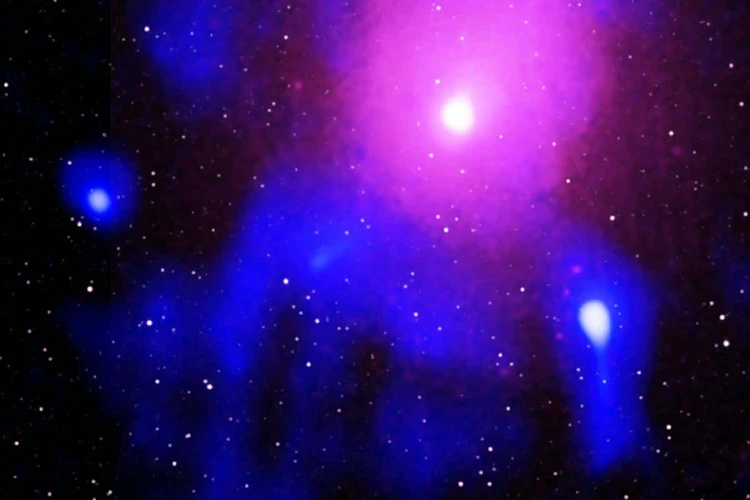
Red giants have a profound impact on the galaxy in which they reside. One significant way in which red giants influence the galaxy is through the dispersal of elements they produce during their stellar evolution. As these massive stars fuse elements in their cores, they synthesize heavier elements like carbon, oxygen, and even elements as heavy as iron and gold. When red giants reach the end of their lives, they release these elements into space through stellar winds and powerful supernova explosions. These newly formed elements then become part of the interstellar medium, enriching the galaxy with a diverse array of materials.
The influx of elements from red giants has far-reaching consequences for the galaxy’s chemical composition. It affects the formation of new stars and planetary systems by providing the raw materials necessary for their construction. Planets like Earth owe their existence to the abundance of heavy elements scattered throughout the galaxy by red giants. Additionally, these elements contribute to the formation of dust clouds, molecular clouds, and nebulae, which serve as stellar nurseries for the birth of new stars.
Red giants also play a crucial role in the redistribution of matter within galaxies. When they go through their expansion phase, they shed their outer layers in a process known as mass loss. This material, enriched with heavy elements, is then dispersed into space, contributing to the overall content of the galaxy. The expelled matter can mix with existing interstellar material, influencing the chemical composition and evolution of the galaxy as a whole.
The stellar winds and intense radiation emitted by red giants can interact with their surroundings, shaping the structure and dynamics of the galaxy. These winds can create shock waves and trigger the formation of new stars. They can also contribute to the mixing of gas and affect the morphology of galaxies, influencing their spiral arms, density waves, and interstellar gas distribution.
Red giants have a profound impact on the galaxy through the production and dispersal of elements, which influence the chemical composition of interstellar material and facilitate the formation of stars and planetary systems. Additionally, their mass loss and energetic processes shape the structure and dynamics of galaxies. The study of red giants and their impact on the galaxy provides valuable insights into the intricate web of celestial processes that drive and shape our universe.
Observation and Study

Observing and studying red giants is a fascinating endeavor that involves a combination of advanced telescopes, innovative instruments, and intricate modeling techniques. Telescopes and instruments specifically designed to study the characteristics of red giants allow astronomers to gather valuable data about these celestial giants. One such instrument, the Hubble Space Telescope, has provided stunning images and detailed information about the structure and composition of red giants. In addition to direct observation, scientists also use stellar interior modeling to gain a deeper understanding of the physical processes occurring within red giants. By simulating the complex interactions of matter and energy within these massive stars, researchers can make predictions about their behavior and evolution. The study of red giants has even led to advancements in our understanding of exoplanetary systems, with discoveries of planets and moons orbiting these stars. The collective efforts of observation and study have shed light on the nature of red giants, leading to remarkable insights into the universe and its fascinating celestial phenomena.
Telescopes and Instruments
Telescopes and Instruments:
1. Radio Telescopes: These instruments are designed to detect and study the radio waves emitted by celestial objects, including red giants. Radio telescopes can provide valuable information about the composition, temperature, and size of red giants by analyzing the radio signals they emit. Some notable radio telescopes used for observing red giants include the Karl G. Jansky Very Large Array (VLA) in New Mexico, USA, and the Atacama Large Millimeter Array (ALMA) in Chile.
2. Optical Telescopes: Utilizing the visible light spectrum, optical telescopes allow astronomers to observe the colors and features of red giants. These telescopes collect and focus light using mirrors or lenses, enabling detailed imaging and spectroscopic analysis. Popular optical telescopes like the Hubble Space Telescope and ground-based telescopes such as the Keck Observatory have contributed significantly to our understanding of red giants.
3. Infrared Telescopes: Red giants emit a significant amount of infrared radiation due to their lower surface temperatures. Infrared telescopes, like NASA’s Spitzer Space Telescope, are specifically designed to detect and study this type of radiation. By observing red giants in the infrared spectrum, astronomers can gather information about the star’s temperature, dust formation, and circumstellar environment.
4. Spectrographs: These instruments play a crucial role in analyzing the light emitted by red giants. Spectrographs allow astronomers to split the star’s light into its constituent wavelengths, creating a spectrum. By examining the spectrum, astronomers can determine the chemical composition, temperature, radial velocity, and other characteristics of red giants.
5. Interferometers: Interferometers combine the signals received by multiple telescopes, increasing their overall resolution and sensitivity. These instruments are particularly useful for studying red giants with complex atmospheres and intricate stellar structures. By working together, the telescopes in an interferometric array can create detailed images and gather valuable data about red giants.
The combined use of these telescopes and instruments provides astronomers with a comprehensive understanding of red giants, enabling them to explore their properties, composition, and dynamic behavior in great detail.
Stellar Interior Modeling
Stellar Interior Modeling:
Stellar interior modeling is a powerful technique used by astronomers to gain a deeper understanding of the inner workings of red giants and other stars. This method involves creating complex computer simulations that simulate the physical processes occurring within a star’s interior. Stellar interior modeling allows scientists to study the various stages of stellar evolution, including the formation and evolution of red giants.
One key aspect of stellar interior modeling is the study of stellar structure, which involves examining the different layers and regions within a star. These models help astronomers determine the temperature, pressure, and density distribution throughout the star, providing valuable insights into the physical conditions that drive nuclear reactions and energy transport.
Additionally, stellar interior modeling helps scientists understand how red giants pulsate and change in brightness over time. By incorporating the physics of stellar oscillations into these models, astronomers can accurately predict the observed variations in a red giant’s brightness, helping to unravel the mysteries of these intriguing celestial objects.
To create accurate stellar interior models, scientists rely on a combination of observational data and theoretical calculations. They compare the properties of observed red giants with the predictions of their models, refining the models to better match the observational data. This iterative process helps to validate the accuracy of the models and improve our understanding of the intricate processes occurring within red giants.
Overall, stellar interior modeling is a crucial tool in the study of red giants, enabling astronomers to unravel the complexities of these massive stars and gain insights into their evolution, structure, and behavior. By refining and improving these models, scientists can continue to expand our knowledge of red giants and deepen our understanding of stellar astrophysics.
Exoplanetary Systems
Exoplanetary systems, also known as extrasolar systems, are a fascinating area of study in relation to red giants. These systems refer to the collection of planets that orbit stars other than our Sun. Red giants, in particular, offer a unique perspective when it comes to understanding exoplanetary systems. The expansion of a red giant can significantly affect the orbits of any planets that may be in its vicinity. As a red giant swells in size, it can engulf and destroy any planets that are too close. This phenomenon is known as “stellar engulfment.” However, if a planet manages to survive this phase, it may experience orbital changes due to the gravitational interaction with the red giant’s expanded outer layers. These interactions can lead to the migration of planets to larger orbits or even the ejection of planets from the system altogether. These dynamic processes occurring in exoplanetary systems around red giants provide astronomers with valuable insights into the gravitational effects and orbital dynamics of planets in extreme environments. By studying the behavior and fate of exoplanets in the presence of red giants, scientists can better understand the potential future of our own solar system and the fate of planets like Earth. The continuous exploration and observation of exoplanetary systems around red giants contribute significantly to our knowledge of the universe and the multitude of planetary systems that exist beyond our Solar System.
External Factors Affecting Red Giants
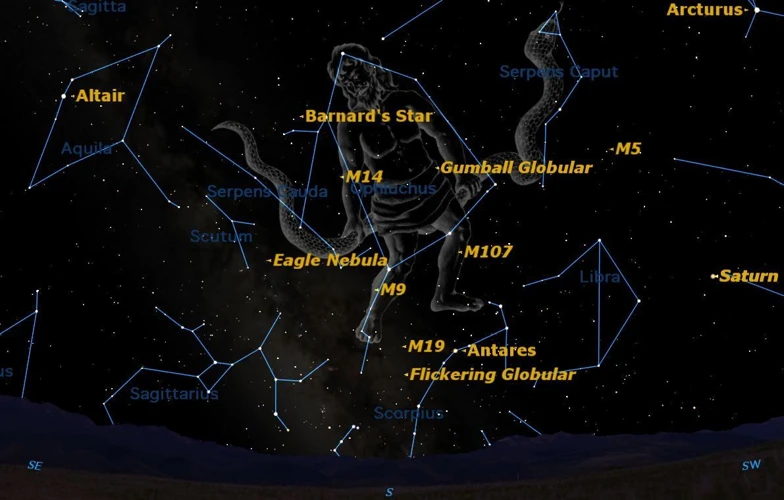
External Factors Affecting Red Giants
Red giants are not solely influenced by internal mechanisms; they are also subject to various external factors that can significantly impact their evolution. One of the key factors in affecting red giants is stellar evolutionary processes. As a red giant progresses through its life cycle, it undergoes significant changes in its composition, size, and luminosity. The interplay between nuclear reactions and stellar structure determines the fate of a red giant, and slight variations in these processes can lead to different outcomes. Another crucial external factor is the interaction with binary star systems. Red giants in binary systems can experience mass transfer, where material from a companion star is accreted onto the red giant. This exchange of mass can alter the structure and evolution of the red giant, affecting its overall behavior. Finally, red giants also experience mass loss due to stellar winds. These winds, comprised of particles expelled from the star’s outer layers, create a significant influence on the star’s evolution and can lead to the formation of planetary nebulae. Understanding these external factors is vital in unraveling the complexities of red giants and their role in the grand tapestry of the universe’s evolution.
Stellar Evolutionary Factors
When it comes to the factors that influence the evolution of red giants, there are several key considerations to explore:
1. Initial Mass: The initial mass of a star plays a crucial role in determining its evolution. Red giants typically form from stars with masses between 0.3 and 8 times that of our Sun. Higher mass stars evolve more rapidly, transitioning into red giants sooner, and undergoing more explosive events such as supernovae at the end of their lives.
2. Nuclear Fusion: The process of nuclear fusion within a star’s core is a critical factor in its evolution. As a star exhausts its hydrogen fuel, fusion reactions begin to take place with heavier elements like helium. This transition leads to the expansion and cooling of the star, ultimately transforming it into a red giant.
3. Mass Loss: Red giants experience significant mass loss through stellar winds. These winds carry away mass from the outer layers of the star, causing it to shrink and allowing the intense gravitational forces in the core to pull the remaining material inward.
4. Helium Flash: As red giants continue to evolve, the core becomes predominantly composed of helium. At a certain point, the helium becomes dense enough for a sudden ignition, resulting in a rapid helium flash. This event generates an immense amount of energy and can cause the outer layers of the red giant to expand even further.
5. Pulsations: Red giants are known for their pulsations, which are variations in brightness and size. These pulsations are caused by the heating and cooling cycles within the star, caused by the changing balance of energy generated through nuclear fusion and energy radiated from the surface.
Understanding these stellar evolutionary factors is crucial in comprehending the intriguing journey of red giants and the varied phenomena they exhibit throughout their existence. These factors shape the remarkable transformations these massive celestial objects undergo, providing insight into the life cycles of stars and the evolution of our universe.
Binary Star Interactions
Binary star interactions play a significant role in the evolution of red giants. In a binary star system, two stars are gravitationally bound and orbit around a common center of mass. Binary star interactions can have a profound impact on the fate of red giants. One common interaction is mass transfer, where matter flows from one star to another. This transfer of mass can have different effects depending on the mass of the stars involved. In some cases, the more massive star may accrete mass from its companion, causing it to grow even larger and potentially evolve into a red giant. On the other hand, if the less massive star is accreting mass from the more massive one, it may trigger a rapid increase in its own evolution, leading it to become a red giant before its companion. Another type of binary star interaction is stellar mergers, where the two stars collide and combine into a single, more massive star. This can also result in the formation of a red giant.
The presence of a binary companion can also lead to unique phenomena in red giants. Tidal forces exerted by the companion can cause the star to become distorted, resulting in changes to its shape and structure. This distortion can affect the mass loss rate of the red giant, with material being transferred to the companion or ejected into space. Some binary interactions can even lead to the formation of exotic objects such as cataclysmic variables or type Ia supernovae.
Studying binary star interactions is crucial for understanding the evolution of red giants and the intricate dynamics of stellar systems. Astronomers use various observational techniques, such as spectroscopy and photometry, to analyze the properties and behavior of binary systems. Additionally, computer simulations and theoretical models are employed to simulate and understand the complex interactions that take place between binary stars. By studying these interactions, scientists can gain insights into the formation, evolution, and ultimate fate of red giants, contributing to our broader understanding of stellar astrophysics.
Mass Loss
Mass loss is a significant phenomenon that occurs during the later stages of a red giant’s life cycle. As these massive stars evolve, they undergo a process called stellar winds, where they expel a portion of their outer layers into space. This mass loss can have a profound impact on both the star itself and its surrounding environment.
The primary mechanism behind mass loss in red giants is through stellar pulsations and strong stellar winds. The pulsations cause the outer layers of the star to expand and contract, resulting in the ejection of material into space. The stellar winds, on the other hand, are driven by intense radiation pressure exerted by the star’s luminous core. These winds carry away mass and other elements that have been synthesized deep within the star.
Mass loss from red giants has several consequences. First, it leads to a decrease in the star’s overall mass. As the star loses mass, its gravitational pull weakens, causing it to become less effective at holding on to its outer layers. This leads to further expansion and an increase in the star’s radius.
Additionally, mass loss plays a crucial role in enriching the interstellar medium with heavy elements. Elements produced in the core of a red giant, such as carbon and oxygen, are released into space through the mass loss process. These enriched materials contribute to the formation of new stars and planetary systems, providing the building blocks necessary for the creation of life.
Mass loss also has a significant impact on the evolution and fate of red giants. As they continuously lose mass, the energy generated in the star’s core decreases, causing the core to gradually cool and contract. This contraction eventually leads to the formation of a stellar remnant such as a white dwarf, neutron star, or even a black hole, depending on the initial mass of the star.
Mass loss is a crucial aspect of red giants’ late-stage evolution. The expulsion of material through stellar winds and pulsations not only influences the star itself but also contributes to the enrichment of the surrounding space with heavy elements. Understanding mass loss in red giants provides valuable insights into the evolution of stars, the formation of new celestial objects, and the intricate workings of our universe.
Conclusion

In conclusion, red giants are truly fascinating celestial giants that offer a wealth of knowledge about the late stages of stellar evolution. Throughout this article, we have explored the definition, characteristics, formation process, life cycle, properties, and composition of these colossal stars. We have also examined their impact on the galaxy and the various methods used to observe and study them. From telescopes and instruments to stellar interior modeling and exoplanetary systems, scientists continue to uncover the secrets of red giants and expand our understanding of the universe. The external factors affecting red giants, such as stellar evolutionary factors, interactions with binary star systems, and mass loss, further contribute to their intriguing nature. By studying red giants, we gain insights into the dynamics of star formation, the creation of elements, and the overall evolution of galaxies. Perhaps one day, the knowledge we gain from red giants will help us unlock even greater mysteries of the cosmos, such as gravitational waves or the impact of constellations on space exploration. Truly, red giants are celestial marvels that inspire awe and wonder, reminding us of the vastness and beauty of the universe we call home.
Frequently Asked Questions

What is the definition of a red giant?
A red giant is a massive star in the late stages of its stellar evolution. It is characterized by its expanded size and cooler surface temperature.
How are red giants formed?
Red giants are formed when a star depletes its hydrogen fuel in the core, causing it to expand and cool. This phase occurs after the main sequence stage.
How large are red giants?
Red giants can be several times larger than their previous main sequence phase. They can range in size from a few times larger than the Sun to hundreds of times larger.
What causes the vibrant colors of red giants?
The vibrant colors of red giants are caused by the cooler temperatures on their surface. These cooler temperatures result in hues ranging from orange to deep red.
What happens during the post-red giant stage?
During the post-red giant stage, the outer layers of the star are ejected into space, creating a planetary nebula. The remaining core, known as a white dwarf, continues to cool over time.
How do we study and observe red giants?
Red giants are studied and observed using various telescopes and instruments, such as spectrographs, which analyze the star’s light to determine its chemical composition and other properties.
What is the role of red giants in the production of elements?
Red giants play a crucial role in the production and dispersal of elements. Through processes like nuclear fusion, they release elements such as carbon, oxygen, and even heavier elements like iron and gold into the surrounding space.
What factors influence the evolution of red giants?
The evolution of red giants is influenced by various factors, including their initial mass, chemical composition, and interactions with companion stars in binary systems.
Do red giants have an impact on the galaxy?
Yes, red giants have a significant impact on the galaxy. The elements they produce and disperse contribute to the enrichment of interstellar gas, which plays a role in the formation of new stars and planetary systems.
Can red giants emit gravitational waves?
No, red giants are not known to emit gravitational waves. Gravitational waves are typically produced by highly energetic events such as the merging of black holes or neutron stars.
References
Frequently Asked Questions

What is a red giant?
A red giant is a type of star that is in the late stages of stellar evolution. It is characterized by its large size and low surface temperature.
How are red giants formed?
Red giants are formed when a star exhausts its nuclear fuel and starts to expand. This expansion occurs as the star begins to burn helium in its core.
How big are red giants?
Red giants can be significantly larger than the star was during its main sequence stage. They can have diameters ranging from a few hundred to a few thousand times larger than the Sun.
What is the surface temperature of a red giant?
The surface temperature of a red giant is much cooler compared to its main sequence stage. It can range from around 3,000 to 4,000 Kelvin.
What elements are produced in red giants?
Red giants are known for producing elements such as carbon and oxygen through nuclear fusion in their cores. These elements are then released into space when the star sheds its outer layers.
How do red giants impact the galaxy?
Red giants play a crucial role in recycling elements in the galaxy. When they shed their outer layers, they enrich the interstellar medium with heavier elements that can be used to form new stars and planets.
How do scientists observe and study red giants?
Scientists use telescopes and specialized instruments to observe red giants. They study their spectra and monitor changes in their brightness to gain insights into their properties and evolution.
What factors influence the evolution of red giants?
The evolution of red giants is influenced by various factors, including the initial mass of the star, its metallicity, and its rotation rate. These factors can determine the size and lifespan of a red giant.
Can red giants interact with other stars?
Red giants can interact with other stars in binary systems. Their gravitational interaction with companion stars can lead to the exchange of mass, altering the evolution and fate of both stars.
Do red giants lose mass?
Yes, red giants lose mass through stellar winds, especially during their post-red giant stage. This mass loss plays a crucial role in shaping the star’s final evolution and can lead to the formation of planetary nebulae.

